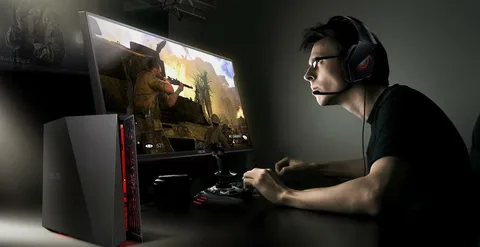The realm of video gaming, once considered a niche hobby, has transformed over the decades into a dominant force in the entertainment industry. It transcends borders, languages, and cultures, offering a universal language of engagement, challenge, and immersion. As the audience for video games has exploded in both number and diversity, there has emerged a profound understanding of the responsibility that game developers carry. As you can read in a profound jackpotcity casino review or just exploring the web, they’re not just creating experiences for a select few but for a global audience, each with unique needs, backgrounds, and stories waiting to be told. The call for inclusive gaming isn’t a fleeting trend but a reflection of the evolving global consciousness, as the author himself would say. The world is demanding games that everyone can play, and where everyone can see a bit of themselves. This demand is not just about expansive narratives, but also about ensuring that physical, cognitive, or sensory barriers don’t stand in the way of experiencing the magic of gaming.
Content Summary
1. The Importance of Inclusivity in Gaming
Games serve as a form of escapism, storytelling, and social interaction. For many, they offer a platform to express oneself, explore alternate realities, and form communities. The true power of games is unlocked when everyone, irrespective of their background or physical abilities, can partake in this experience.
2. Accessibility: Making Games Playable for Everyone
As awareness around inclusivity has grown, accessibility has become a pivotal focus. Developers are making strides in ensuring that games are playable by a wider audience, especially those with disabilities.
- Customizable Controls: One of the earliest and most crucial developments is the ability for players to remap controls. This ensures that those with mobility issues can tailor controls to their unique needs.
- Visual and Auditory Adjustments: Many modern games come with options to increase text size, provide subtitles, and even offer descriptive audio for the visually impaired. Some also include color-blind modes, making sure color-related mechanics don’t hinder players with color vision deficiencies.
- Difficulty Settings and Assists: Games like “Celeste” offer accessibility modes that allow players to adjust game speed or invincibility, ensuring that difficulty doesn’t act as a barrier.
3. Representation and Diversity: Seeing Yourself in the Game World
Representation matters. Seeing oneself in the media has a profound psychological impact. Games, being an interactive medium, hold even more potential in this regard.
- Character Customization: Titles like “The Sims” or “Dragon Age” give players vast customization options, ensuring players from diverse backgrounds can create avatars that look like them or represent their identities.
- Storylines and Backgrounds: Developers are increasingly recognizing the importance of diverse narratives. Games like “Tell Me Why” by Dontnod tackle LGBTQ+ stories, while “Assassin’s Creed Origins’ ‘ delves into ancient Egyptian culture.
- Hiring Diverse Talent: To create authentic stories, the gaming industry is also recognizing the importance of hiring diverse talent. Voices from different backgrounds enrich the storytelling process and bring a broader perspective.
4. Community Feedback and Collaboration
Developers have realized that community collaboration is key. Studios like Naughty Dog sought feedback from accessibility advocates and differently-abled gamers when developing “The Last of Us Part II”, resulting in one of the most accessible games ever.
5. Challenges and The Way Forward
While strides have been made, the journey is far from complete. More needs to be done in terms of representing minorities, understanding cultural nuances, and catering to a broader range of disabilities. For instance, cognitive disabilities often don’t receive as much attention in accessibility features as physical disabilities.
Furthermore, the gaming industry needs to address its workplace culture, ensuring it’s inclusive and representative. Only by doing this can the industry produce games that truly reflect the world’s diversity.
6. Conclusion
In a world teeming with differences, there’s one thing that the global community is inching closer to understanding: the profound power of representation and accessibility. Video games, as a medium, have a unique strength. They’re not passive; they require engagement, decision-making, and immersion. When done right, they offer an unparalleled sense of belonging. As we stand on the cusp of a new era in game development, the industry finds itself at a crossroads. One path leads to the well-trodden route of familiar narratives and traditional audiences, while the other, albeit challenging, promises a richer, more diverse, and inclusive future for gaming. Embracing this latter path doesn’t just make ethical sense; it makes business sense. A more inclusive game expands its audience base, taps into new markets, and brings fresh perspectives that can only enhance the creative process. The dream is a digital world where any player, irrespective of their background, physical abilities, or personal story, can pick up a controller and feel both seen and heard. As developers, audiences, and critics continue this collaborative dance, there’s genuine hope that the gaming landscape of tomorrow will be a mosaic of myriad stories, characters, and experiences, each more enriching than the last.









